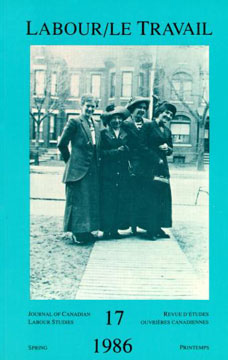Abstract
DURING THE 1920S AND early 1930s the struggle for industrial unionism in the Canadian auto industry was predominantly organized and led by Communist Party members. They, however, had little success with workers whose enjoyment of unusually high industrial wages was tempered by the knowledge that they themselves were almost as replaceable and interchangeable as the parts they assembled. An upswing of industrial militancy in the 1928-9 boom suggested that "Fordism" was not immutable, but any possibility of establishing a "red" auto union disappeared with the arrival of the Depression. Nevertheless, during the grimmest crisis years, Communists kept the idea of industrial unionism alive, and in semi-clandestine conditions built a network of union activists. The formation of the CIO and UAW gave this group the opportunity to turn their aspirations into reality.
PENDANT LES ANNÉES vingt et au début des années trente, la lutte pour le syndicalisme industriel dans l'industrie automobile canadienne était surtout menée par des membres du Parti communiste. Ils eurent cependant peu de succès auprès de travailleurs qui jouissaient de salaires supérieurs et se savaient presqu'aussi remplaçables et interchangeables que les pièces qu'ils assemblaient. En 1928 et 1929, années de boom économique, une remontée du militantisme industriel suggéra que le "fordisme" n'était pas immuable, mais avec la dépression des années trente disparut toute possibilité d'établir un syndicat rouge dans l'industrie automobile. Toutefois, pendant les pires années de la crise, les communistes maintinrent l'idéal du syndicalisme industriel et dans la semi-clandestinité formèrent un réseau d'activistes syndicaux. La formation du COI et des TUA donna à ces militants l'occasion de transformer leurs aspirations en réalités.
